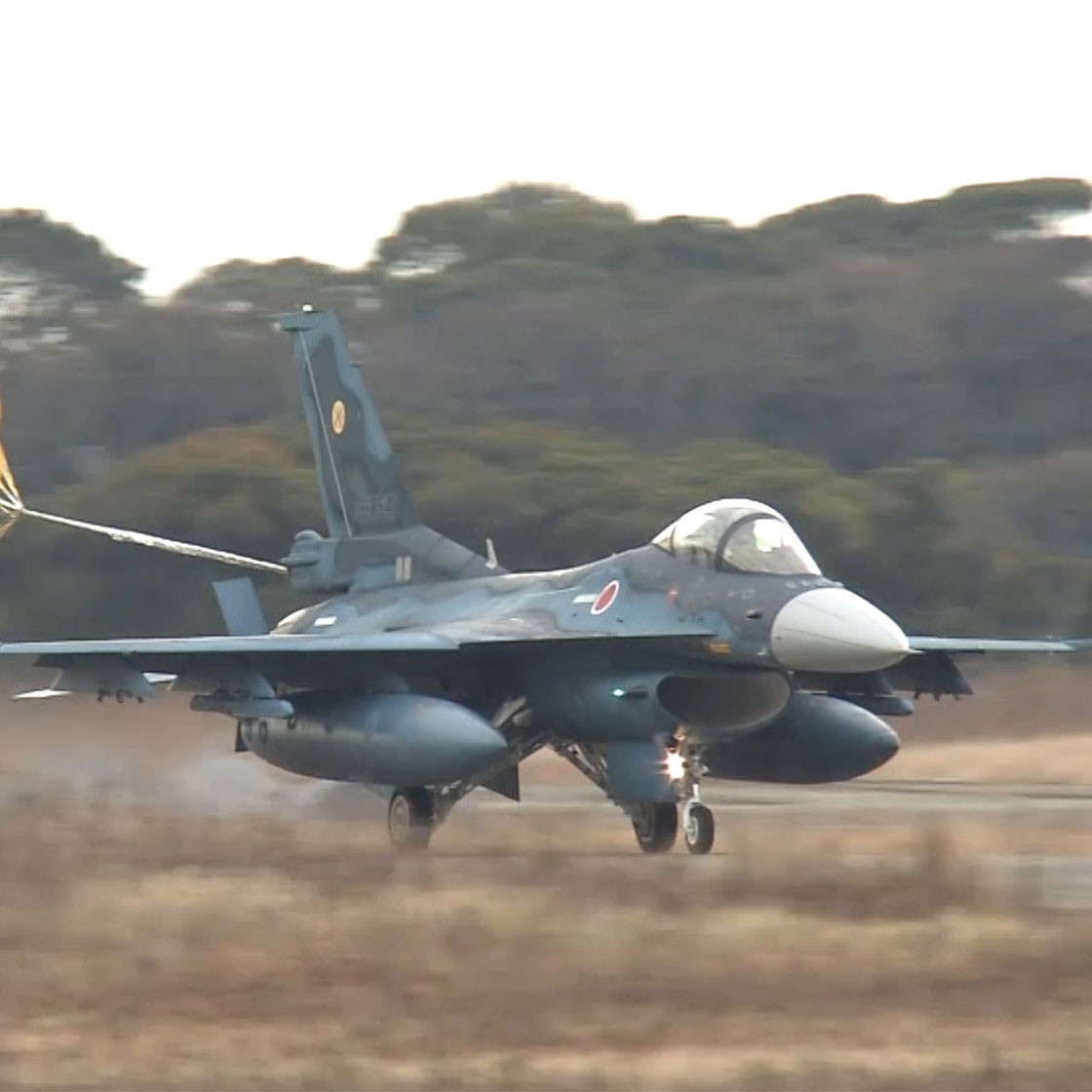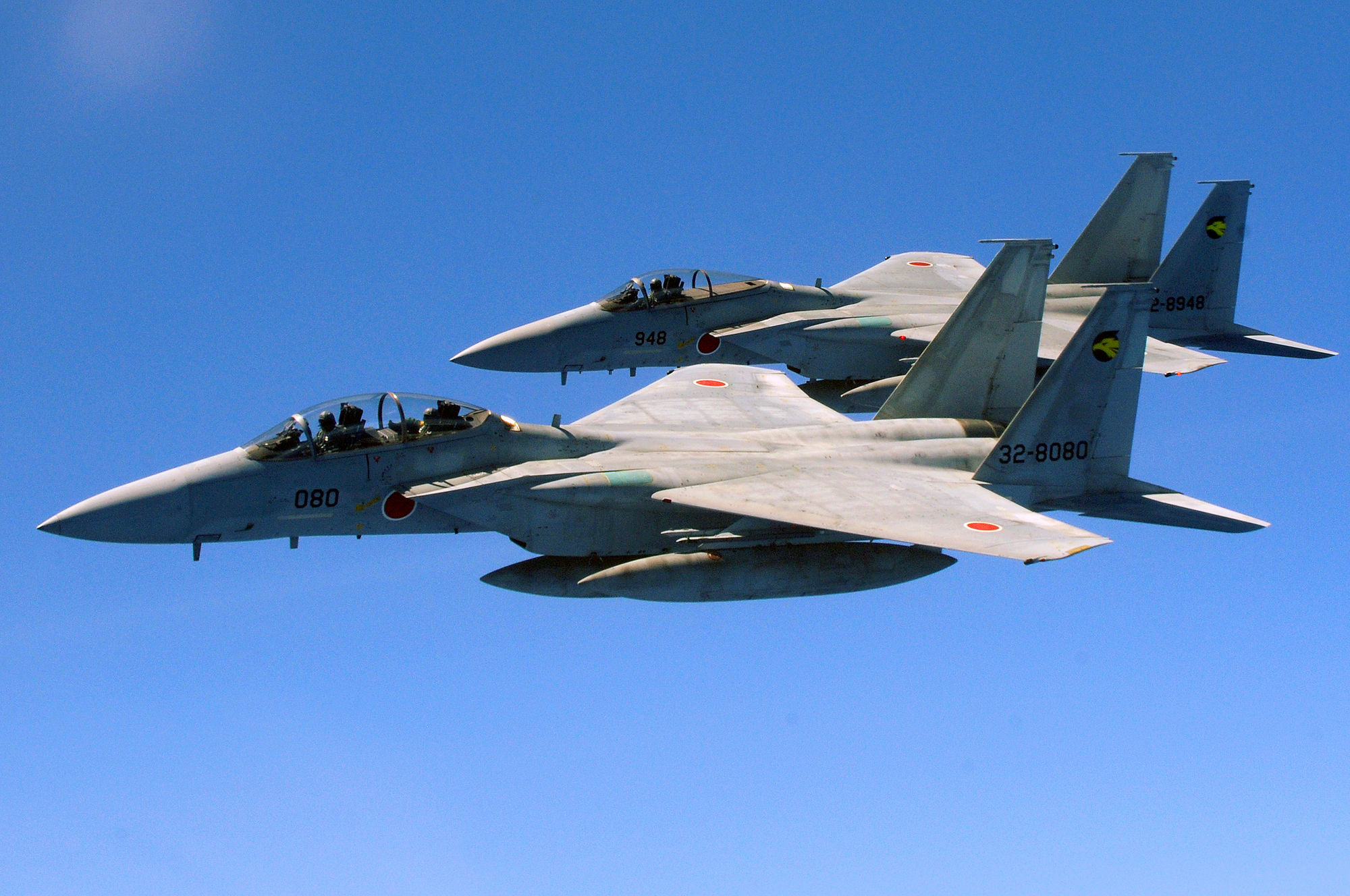New Japanese Fighter Jet - Reports in Japanese media suggest that Tokyo plans to team up with the UK, not the US. Apparently, BAE Systems has been designated as the most likely partner for the program, which aims to field a new fighter jet around 2035, the same timeline as the British company's Tempest Future Combat Air System (FCAS), which you can read more about . Here.
It appears that the final decisions on the program were made during high-level meetings between Japanese, British and American officials earlier this month. Japanese Prime Minister Fumio Kishida met with his British counterpart Boris Johnson in the United Kingdom on May 5, with reports of an "in-principle agreement to cooperate on future combat programs" to be finalized by the end of the year. A day before, the Japanese Minister of Defense Nobu Kishi met with the American Secretary of Defense Lloyd Austin, with future battles apparently also on the agenda.
New Japanese Fighter Jet

According to reports, Tokyo has already started negotiations with BAE Systems to expand its role in Japan's next-generation fighter. British companies have already reached an agreement with Japan to help with the development of the power plants and to defend against the next generation of air-to-air missiles, which will possibly arm the new aircraft.
Japan Nears Deal To Develop Next Generation Fighter With U.k., Italy
Further bilateral cooperation includes the UK Ministry of Defense's support for Japan's Joint New Air-to-Air Missile Program, or JNAAM. The weapon is expected to combine British expertise in relation to the MBDA Meteor air-to-air missile (BVRAAM) beyond visual range with an advanced radio frequency (RF) seeker developed in Japan.
Having BAE Systems join the Japanese future fighter program as a development partner would be a very significant step. It would also be bad news for American defense contractors, especially Lockheed Martin. In late 2020, the Ministry of Defense of Japan announced Lockheed as a potential partner in the program. Since then, however, both parties seem to have fallen out over technology transfer issues.
Lockheed Martin previously collaborated with Japan on the Mitsubishi F-2 multirole fighter, based on the F-16 airframe, which the eventual F-X is expected to replace.
In particular, it seems that Japan is not happy with how the aircraft will be upgraded once in service. Although the specifics are unclear, it is possible that Lockheed plans to take control of software and potentially hardware upgrades for the jet, limiting the degree of autonomy of its Japanese operator.
South Korea Unveils Kf 21 Fighter Jet, A Cheaper Alternative To The Us Made F 35
Mitsubishi Heavy Industries (MHI) will resume its role from the F-2 as the prime contractor in the development of the new aircraft. Other industrial partners include Ishikawajima-Harima Heavy Industries (IHI), responsible for the power plant, and working in partnership with Rolls-Royce. Last year, it was announced that work on a combined demonstration power system began in early 2020. The British motor also produced the power plant for the Tempest.
In the past, there were also reports in the Japanese press that suggested that the Tempest and F-X will share not only engines, but also "air intakes ... and the area near the exhaust" and that these components will be optimized for theft . Both sections are some of the most challenging to engineer due to low observable quality and performance.
Clearly, a firm agreement between Tokyo and London could pave the way for MHI, and other Japanese industry partners, to formally join the Tempest program. As a medium to large, stealthy, twin-engine fighter, the Tempest seemed a fair match to at least some of the Japanese needs. The Royal Air Force of the United Kingdom also plans to have the Tempest replace its Typhoons by 2035, matching the Japanese ambitions.

For the UK, and BAE Systems in particular, an international partnership on the Tempest program should lower costs and reduce overall risk, especially as Japan is likely to join with a firm commitment to purchase aircraft at the end of the development period.
Ninth Year Of Increased Military Spending By Japan
So far, Team Tempest's efforts also include Italian defense contractor Leonardo and European missile consortium MBDA, while Sweden is also on board as an international partner. However, neither Italy nor Sweden have so far announced firm plans to actually buy examples of the sixth-generation fighter.
For Japan, meanwhile, there could be a lot to gain from joining Team Tempest, as its purpose extends far beyond the lucky fighter that is its core. Ultimately, the program aims to field a sixth-generation “system of systems” air combat capability, to include dedicated complementary drones, sensors, air-launched weapons and support architecture.
Historically, the Japan Air Self-Defense Force (JASDF) has primarily relied on US-made fighter aircraft and its air defense force is currently led by the F-15J Eagle and a growing number of F-35A stealth fighters. The next-generation fighter would have to offer interoperability with American manufacturing equipment, but that shouldn't necessarily be a major problem if Tokyo goes with BAE systems. After all, the UK is also considering the Tempest to be able to work with its F-35Bs.
, there still seems to be at least the potential for the United States to salvage something from Japan's next-generation fighter jet program. His report suggests that a final decision on development work will be made later this year and long-standing relationships with Lockheed Martin, and others, could also work in favor of a U.S.
Tempest Fighter Jet Heralds A New Dawn For The British Defence Industry
Currently, the momentum seems to be with BAE Systems, which would seem to offer Japan the opportunity to move into a ready sixth-generation air combat program, something that is unlikely for rivals of the United States, at least at this stage, to agree. It is worth remembering that when Japan expressed interest in acquiring the F-22 Raptor, then America's last air superiority fighter, the request was rejected due to fear that the details of its sensitive components and capabilities would leak.
An F-22 Raptor from Joint Base Elmendorf-Richardson, Alaska, takes off at Yokota Air Base, Japan. AIR FORCE/YASUO OSAKABE
Regarding the reported Japanese concerns about technology transfer issues with the United States, there are few details available here, but foreign partners in the F-35 program, of which Japan is one, have, in the past, expressed concerns about the level of independence . They enjoy when it comes to upgrading or adapting the jets. Meanwhile, the foreign operators of the Joint Strike Fighter are also displeased with the way the aircraft is programmed to collect and store potentially sensitive data and transfer it to the United States.
On the other hand, joining Team Tempest also comes with its fair share of risk for Japan. While the UK has repeatedly talked about the program as a central element of the UK's combat air strategy, it remains an incredibly expensive undertaking and one that puts considerable pressure on an already tight British defense budget. As we have discussed in the past, it is difficult to see how Tempest can be acquired for the RAF in sufficient quantities alongside a full purchase of 138 F-35Bs. Even if the final F-35B purchase is scaled back, Tempest still needs commitment from new and existing international partners to spread the financial burden.
Japan's X 2 Stealth Fighter Jet Completes Its Maiden Flight With 'no Particular Problems'
Going all-in with BAE Systems would leave the future of MHI's X-2 Shinhin experimental aircraft and IHI's under-development XF9 fighter jet in jeopardy. However, there is room for both efforts to feed into a joint Anglo-Japanese program and the X-2, in particular, was only intended as a test asset, rather than a development prototype for a future action.
Politically, an expanded military relationship with Japan will certainly win the support of the British government as the UK increasingly shifts its strategic and military priorities in the Asia-Pacific region, with an eye on China's growing territorial ambitions and military expansion. The defense secretary of the United Kingdom, Ben Wallace, said last year that strengthening partnership in the Indo-Pacific is "a strategic priority" and pointed to the motor agreement with Japan as a clear example of this.
As for BAE Systems, the company will now be even more hopeful that Japan will make a firm commitment to Team Tempest in terms of sharing development costs for the future fighter and its advanced subsystems, as well as buying the jets once they are available. In December of last year, Japanese newspaper Nikkei unveiled tantalizing details of what could become Japan's 6th generation fighter. The plane will be developed in-house and has now been brought in at a cost of about 5 trillion yen (about 48 billion dollars).
The aircraft, called F-X or F-3, was considered necessary to maintain, and hopefully exceed, the air capabilities of many of its neighbors' leading air assets - especially China or Russia.
Japan To Test 5th Generation Fighter Design
According to current estimates from Japan's Ministry of Defense, China apparently has more than 1,000 "fourth generation" fighters. What's worse (from Japan's perspective) is that these numbers have tripled in the last decade or so.
To add to Tokyo's woes, Beijing has already expressed its ambitions to deploy "fifth generation" fighters with stealth capabilities, too. Russia also plans to introduce a fifth generation aircraft soon, while it is also developing a large unmanned aerial vehicle.
The news is not completely out of the blue, as the government of Japan previously announced its medium-term plans to develop its own next-generation fighter in 2018. But what is new?

Second degree assault washington state, 2nd degree assault sentence, 2nd degree aggravated assault, 2nd degree assault mn, 2nd degree assault, 2nd degree assault definition, 3rd degree assault washington state, 4th degree assault washington state, 2nd degree felony assault, 4th degree assault washington, what is assault 2nd degree, 2nd degree assault charges

0 Comments